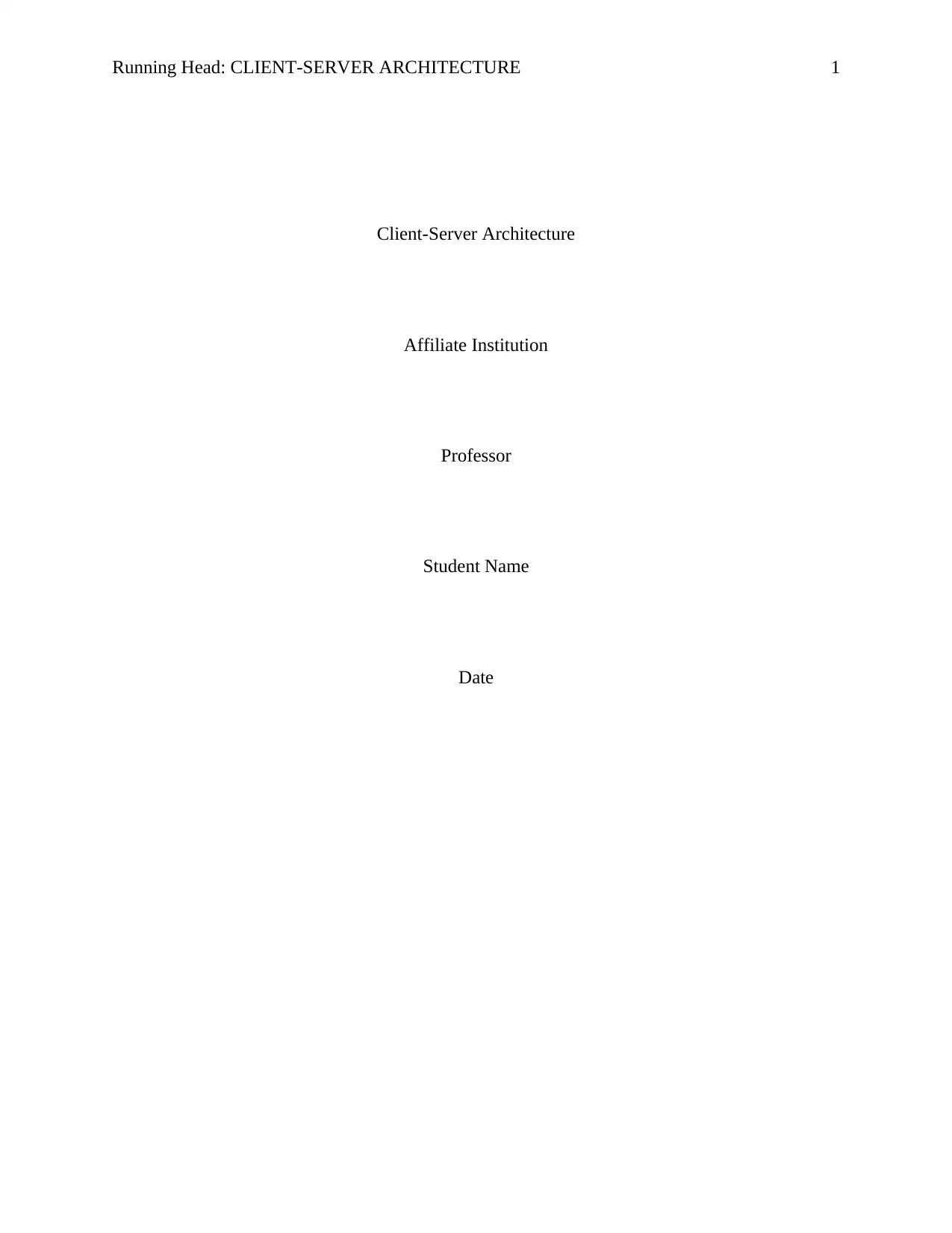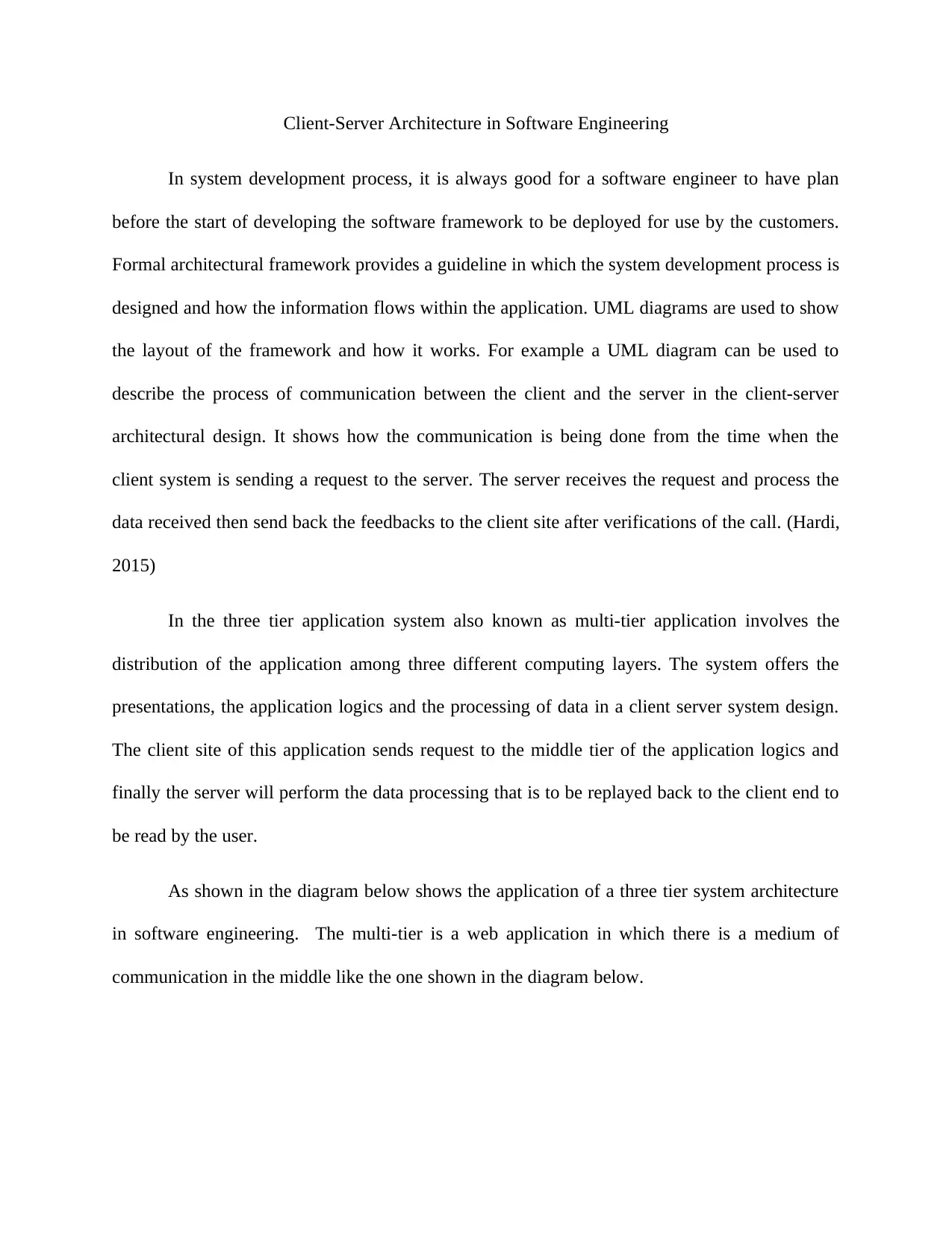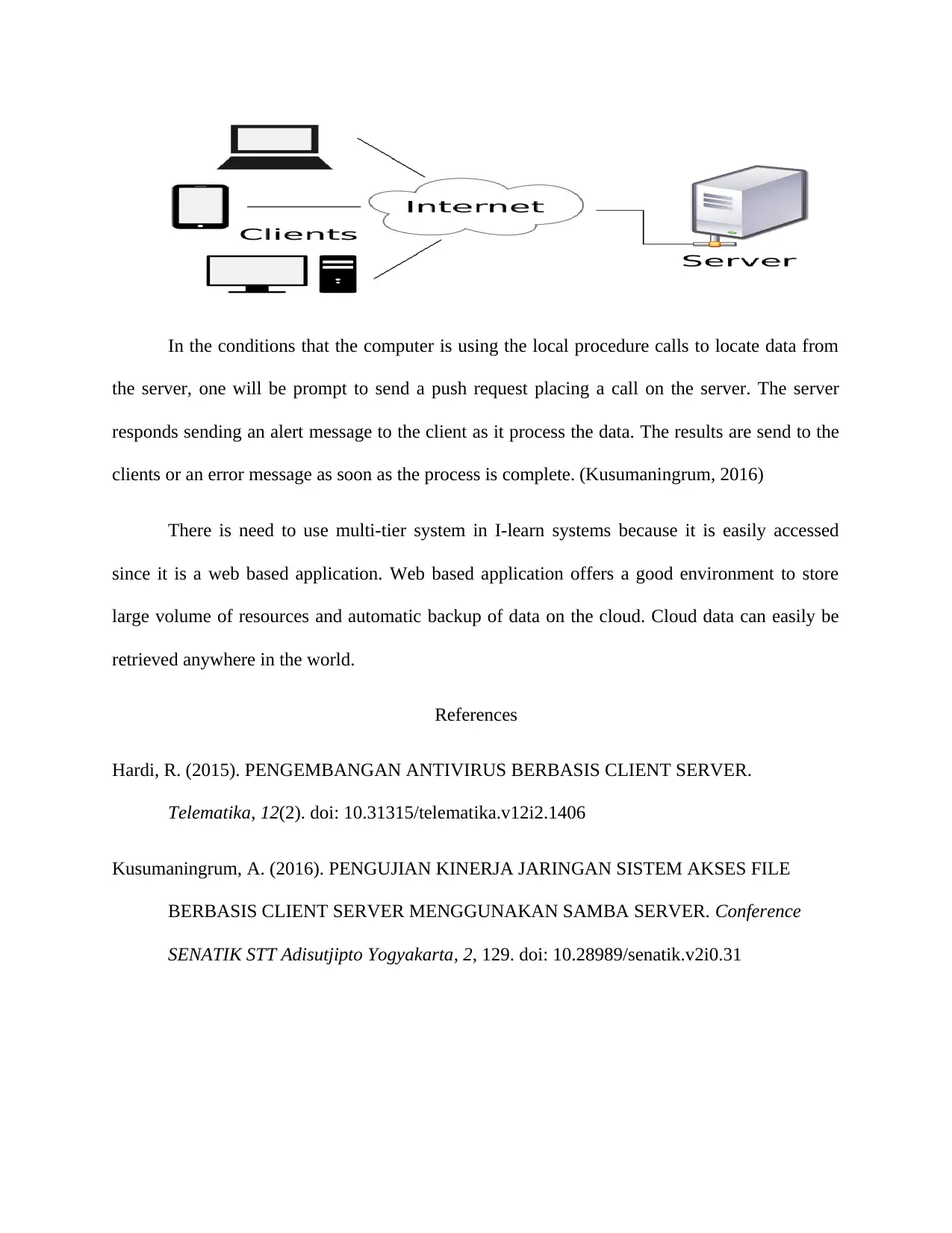Client-Server Architecture Analysis for Software Engineering Systems
VerifiedAdded on 2022/08/17
|3
|489
|485
Report
AI Summary
This report provides an overview of client-server architecture in software engineering, focusing on its fundamental principles and practical applications. It begins by highlighting the importance of architectural frameworks and the role of UML diagrams in illustrating the communication process between clients and servers. The report then delves into the three-tier application system, explaining its distribution across presentation, application logic, and data processing layers. The report uses a diagram to illustrate the multi-tier system's architecture and discusses the process of request and response handling in this context. Furthermore, the report emphasizes the advantages of using multi-tier systems in web-based applications, particularly for I-learn systems, highlighting the ease of access, large storage capacity, and automatic data backup capabilities provided by cloud technology. References to relevant research papers support the concepts discussed.
1 out of 3










![[object Object]](/_next/static/media/star-bottom.7253800d.svg)